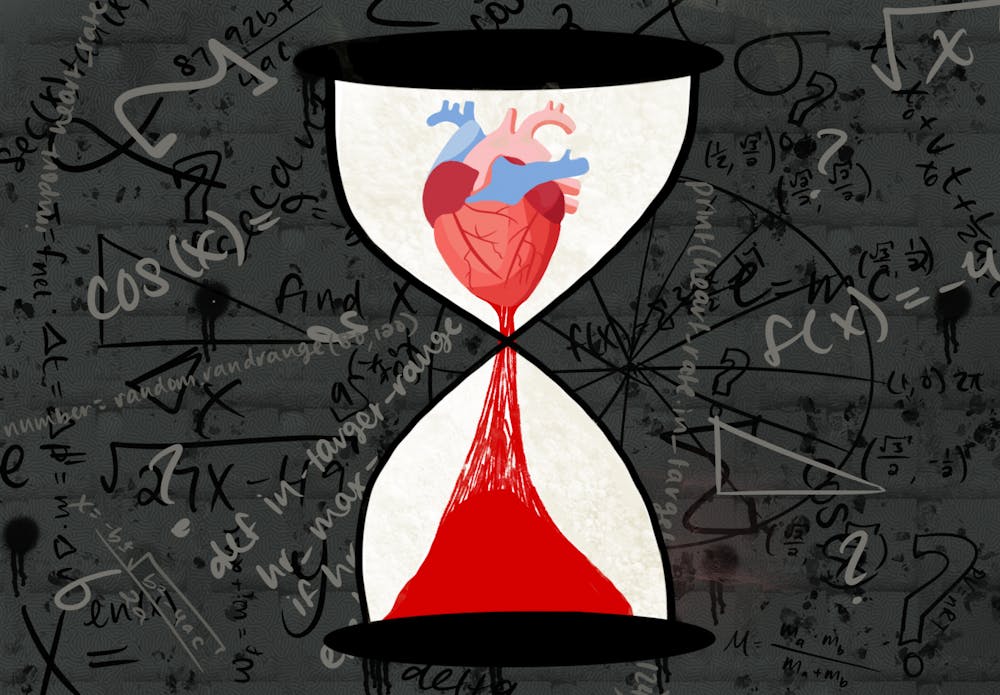at U.Va. Children's Hospital, must examine and analyze days of information to determine whether a donor heart is a match for a young patient, based on hundreds of variables about the life and death of the donor.
Pediatric heart transplants provide a treatment option for children with end-stage heart disease, but half of all donated pediatric hearts are discarded, and 20 percent of children on the waitlist for a donor heart die before receiving one, McCulloch said. This disparity stems from the tight time constraint that a doctor has to analyze the donor files before accepting or rejecting a heart for transplantation.
The process of organizing an organ transplant requires doctors to analyze donor files in a short period of time in order to decide whether the donor heart would be a good candidate for their patient. Donor files include information from days prior to the donor’s brain death and list information such as whether the patient had CPR, the number of times and length of time that they had CPR, the medications that were prescribed and the cause of death. If the donor heart is rejected or has not been accepted within a 20-minute timeframe, the United Network of Organ Sharing offers the heart to the next patient on the waiting list.
McCulloch said it was a difficult process for doctors to swiftly take into account the many factors that can determine whether the heart was a good match for their patient within the limited timeframe before the opportunity is given to another patient.
“[The quicker you receive the heart from the donor], the more likely you are to have a better recovery of that organ, and the more likely you are to have good outcomes from it,” McCulloch said.
In an effort to tackle this issue, McCulloch teamed up with Michael Porter, associate engineering systems and environment professor, as well as Pete Alonzi, Open Data Lab project manager and data scientist at the University’s School of Data Science, along with a group of University students to create a prospective model to predict the likelihood of a waitlisted patient having a good outcome with the donor heart that is offered.
In order to create this model, the team reviewed decades of data from UNOS. The data lacked a standardized format — which is where the University students played a key role. The students were put in charge of reading echocardiograms — an ultrasound of the heart. Class of 2021 alumna Soraya Moise was one of them.
Moise originally got involved in the project through the University’s Internship Placement Program and became a clinical research intern. While she has now graduated, she explained how the project allowed her to have a unique perspective of the organ donor system.
“It was really humbling and also sad at times,” Moise said, “So very tragic incidents would happen, and it is heartbreaking, but it is definitely part of life. And I think being exposed to it in this type of way was definitely a neat perspective. And just again, an overall humbling experience.”
When analyzing the data and looking for patterns, the team realized the impact of behavioral economics on organ transplants. Behavioral economics refers to using economics and psychology to understand how people behave the way they do, and can be used to observe the behavior of transplant programs in association with UNOS.
In order to remain officially recognized and eligible for donor organs, the transplant program has to maintain a certain survival rate. This can result in doctors changing the amount of risk that they are willing to take in considering whether to accept a donor organ — whether they are willing to take more risk with a less favorable donor heart or not willing to take any risk unless it is with a perfect match.
Even without consciously taking this into consideration, McCulloch said physicians can become more conservative when accepting donors to keep mortality rates low in order to remain recognized as an eligible transplant program by UNOS.
Another pattern that the team found was how rejections by previous programs predicted whether or not the donor organ might be accepted. When a donor organ is rejected by one program, UNOS offers it to another patient who is next on the waiting list, and that patient’s physician can see how many times that organ was rejected.
“The single strongest donor predictor of a program accepting a heart or not accepting a heart, or refusing a heart, is the number of prior rejections and has nothing to do with whether it’s a good donor or not,” McCulloch said. “It’s just that if other people refused it, the odds of the next institution refusing it goes up significantly.”
The predictive model that McCulloch, Porter and the team developed does not take these subjective factors into account, relying on quantitative data to create a score that provides the large amount of information in a concise, easily digestible and understandable manner. This is why the project is envisioned as a tool for a concise overview of objective data, so that the physician can focus more on the big picture, using their judgment to take into account subjective variables that are individual to every patient.
“Our current plan right now is just to stay in the pediatric heart transplant domain,” Porter said. “We’re working on how to ensure that even after we construct these models and do this interesting science in research analysis, that it can be presented to the doctors and the transplant centers in a way that they can use it.”
The team is currently planning on staying with Porter’s specialty of pediatrics and is working to obtain additional funding from the National Institute of Health to continue their research, and says that they hope their predictive modeling can help reduce the number of discarded pediatric hearts and to aid doctors in helping a greater number of children.







